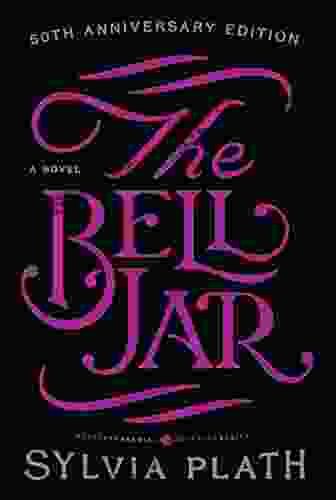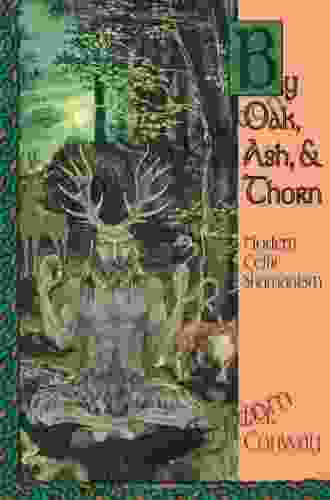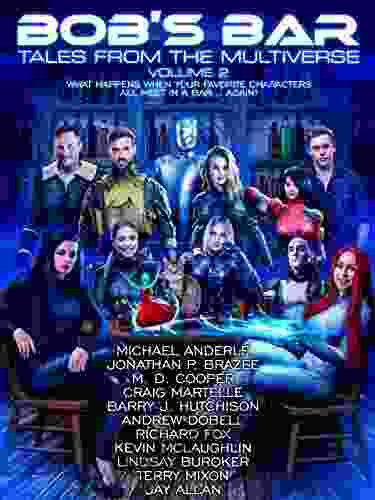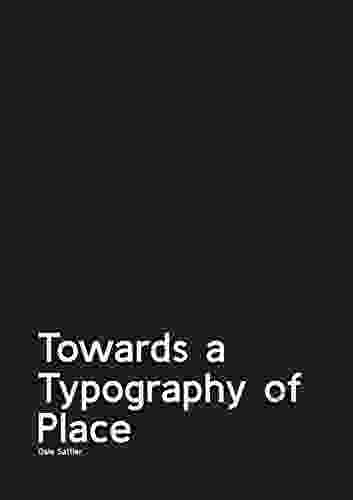Journey into the Bell Jar: Exploring Sylvia Plath's Haunting Masterpiece


4.6 out of 5
| Language | : | English |
| File size | : | 1581 KB |
| Text-to-Speech | : | Enabled |
| Screen Reader | : | Supported |
| Enhanced typesetting | : | Enabled |
| X-Ray | : | Enabled |
| Word Wise | : | Enabled |
| Print length | : | 190 pages |
A Literary Journey into the Mind of a Troubled Young Woman
Published in 1963, The Bell Jar is the semi-autobiographical novel that catapulted Sylvia Plath to literary stardom. It portrays the psychological struggles of Esther Greenwood, a brilliant young woman navigating the societal expectations and personal turmoil of the 1950s. Through Esther's vivid voice, Plath weaves a haunting tale of mental illness, feminism, and the suffocating pressures faced by women in a patriarchal world.
Esther Greenwood: A Complex and Unforgettable Protagonist
Esther Greenwood is a complex and deeply relatable character. As a gifted college student from a working-class family, she dreams of breaking free from societal norms and finding her own path. However, her aspirations collide with the expectations of her family, her teachers, and a society that restricts women's potential.
Overcome by a suffocating sense of depression, Esther's mental state deteriorates into a psychological tailspin. She experiences hallucinations, delusions, and suicidal thoughts, culminating in a harrowing stay in a mental institution.
Mental Health and the Stigma of Madness
One of the most powerful aspects of The Bell Jar is its unflinching portrayal of mental illness. Through Esther's experiences, Plath exposes the stigma and misunderstanding that surrounds psychological suffering.
Esther's descent into madness is both terrifying and heartbreaking. Yet, Plath's writing also captures the resilience and strength of the human spirit, as Esther battles against her demons and seeks to regain her sanity.
Feminism and the Patriarchy's Grip
The Bell Jar is also a powerful feminist novel. Through Esther's struggles, Plath explores the societal constraints and double standards that women faced in the 1950s.
Esther's desire for independence and equality is met with resistance from all sides. Her male professors dismiss her intellectual abilities, her parents pressure her to conform to traditional gender roles, and her romantic relationships are marked by power imbalances.
Plath's portrayal of Esther's experiences reflects the broader societal challenges faced by women during that era and continues to resonate with women today.
The Literary Power of The Bell Jar
Beyond its powerful themes, The Bell Jar is a testament to Sylvia Plath's literary brilliance. Her vivid and poetic prose brings Esther's inner world to life, immersing readers in her thoughts, emotions, and struggles.
Plath's use of symbolism and imagery enhances the novel's psychological depth. The titular bell jar, representing societal oppression, weighs heavily upon Esther's mind. Other recurring images, such as bees, spiders, and glass, evoke feelings of entrapment, isolation, and fragility.
A Timeless Classic with Enduring Relevance
Since its publication, The Bell Jar has become a modern classic, widely read and studied by generations of readers. It has been translated into more than 20 languages and adapted into several films and television series.
The novel's enduring relevance stems from its timeless themes and the universality of Esther's experiences. It continues to resonate with readers, especially young women, who grapple with mental health, gender inequality, and the search for identity.
The Bell Jar is a literary masterpiece that transcends time and cultural boundaries. Sylvia Plath's haunting tale of a young woman's mental breakdown and feminist awakening is both deeply moving and thought-provoking.
Through Esther Greenwood's unforgettable journey, The Bell Jar exposes the stigma surrounding mental illness, challenges societal norms, and celebrates the resilience of the human spirit. It is a novel that will stay with you long after you finish it, leaving a lasting impact on your understanding of the human condition.
4.6 out of 5
| Language | : | English |
| File size | : | 1581 KB |
| Text-to-Speech | : | Enabled |
| Screen Reader | : | Supported |
| Enhanced typesetting | : | Enabled |
| X-Ray | : | Enabled |
| Word Wise | : | Enabled |
| Print length | : | 190 pages |
Do you want to contribute by writing guest posts on this blog?
Please contact us and send us a resume of previous articles that you have written.
 Book
Book Novel
Novel Page
Page Chapter
Chapter Text
Text Story
Story Genre
Genre Reader
Reader Library
Library Paperback
Paperback E-book
E-book Magazine
Magazine Newspaper
Newspaper Paragraph
Paragraph Sentence
Sentence Bookmark
Bookmark Shelf
Shelf Glossary
Glossary Bibliography
Bibliography Foreword
Foreword Preface
Preface Synopsis
Synopsis Annotation
Annotation Footnote
Footnote Manuscript
Manuscript Scroll
Scroll Codex
Codex Tome
Tome Bestseller
Bestseller Classics
Classics Library card
Library card Narrative
Narrative Biography
Biography Autobiography
Autobiography Memoir
Memoir Reference
Reference Encyclopedia
Encyclopedia Stephanie Vandrick
Stephanie Vandrick Cute Amigurumi
Cute Amigurumi Conner Gorry
Conner Gorry Kat Kruger
Kat Kruger Peter Hessler
Peter Hessler Michael Parker
Michael Parker Mike Yamada
Mike Yamada Daigo Umehara
Daigo Umehara Deborah Peterson
Deborah Peterson Nefertiti Austin
Nefertiti Austin Nrup Parikh
Nrup Parikh Jimmy Elliott
Jimmy Elliott Stephen Clarke
Stephen Clarke Creative Guy
Creative Guy Michael Dante Dimartino
Michael Dante Dimartino Lee Bermejo
Lee Bermejo David W Brown
David W Brown Thomas Berry
Thomas Berry Colin Freeman
Colin Freeman Craig Briggs
Craig Briggs
Light bulbAdvertise smarter! Our strategic ad space ensures maximum exposure. Reserve your spot today!

 Fyodor DostoevskyDiscover the Ultimate Baby Comfort: 25 Crochet Baby Blanket Patterns from...
Fyodor DostoevskyDiscover the Ultimate Baby Comfort: 25 Crochet Baby Blanket Patterns from... Gustavo CoxFollow ·3.8k
Gustavo CoxFollow ·3.8k Tyler NelsonFollow ·15.9k
Tyler NelsonFollow ·15.9k Dashawn HayesFollow ·17k
Dashawn HayesFollow ·17k Dawson ReedFollow ·14.2k
Dawson ReedFollow ·14.2k Ashton ReedFollow ·18.4k
Ashton ReedFollow ·18.4k Jerry HayesFollow ·8.4k
Jerry HayesFollow ·8.4k Austin FordFollow ·11.1k
Austin FordFollow ·11.1k David PetersonFollow ·6.6k
David PetersonFollow ·6.6k

 Cruz Simmons
Cruz SimmonsUnveiling the Secrets: An Insider Guide to School Bonds...
Unlock the Power of School...
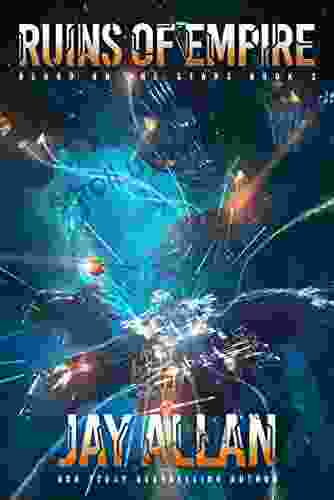
 Gil Turner
Gil TurnerRuins of Empire: Blood on the Stars - The Epic Space...
Ruins of Empire: Blood on the Stars is the...
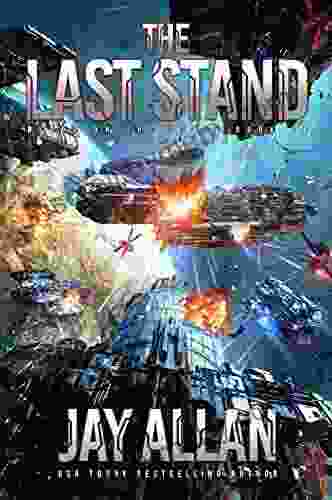
 Allen Ginsberg
Allen GinsbergPrepare for the Ultimate Space Opera: Delve into The Last...
Embark on an...

 Anton Foster
Anton FosterUnleash Your Inner Artist: The Ultimate Guide to Oil...
Chapter 1: The...
4.6 out of 5
| Language | : | English |
| File size | : | 1581 KB |
| Text-to-Speech | : | Enabled |
| Screen Reader | : | Supported |
| Enhanced typesetting | : | Enabled |
| X-Ray | : | Enabled |
| Word Wise | : | Enabled |
| Print length | : | 190 pages |


